Creepshow Season 2 is upon us and, friends and neighbors, rejoice and be glad! The Shudder Original series has returned, and with it comes as explosive and nostalgic of a first episode as one could ever dream of with segments “Model Kid” and “Public Television of the Dead.” Monster kids near and far, prep yourselves for a glorious dive into the dark. It is my hope that you’ve seen the first episode already, because if not: SPOILERS AHEAD. (And I don’t want to spoiler any of this on you, it’s worth it, go watch and come back!)
“Model Kid”
Beyond the opening sequence and title animation (complete with illustrations from legendary comic artist Kelley Jones), an emotional feast awaits. “Model Kid”—the initial segment in episode one—begins in tribute to the shadowy murk of yesteryear’s cinematic classics. We’re treated to Gillman Meets The Mummy, a damn near pitch-perfect callback to the classic Universal Monster films. Director/Producer/Magical Madman Greg Nicotero really outdoes himself with attention to detail in these opening minutes. If the resolution was just a smidge more grainy, he sure could’ve fooled me!
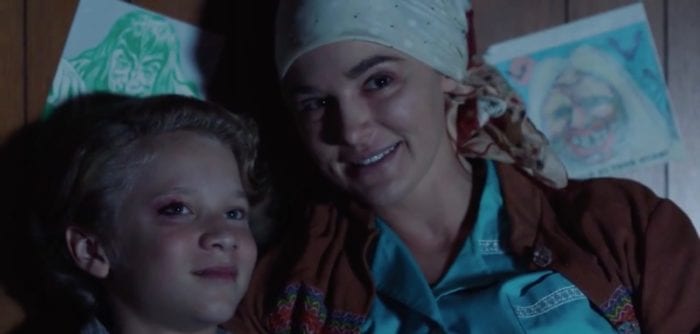
The story of “Model Kid” concerns itself fully with young Joe Aurora (Brock Duncan), a late ’70s preteen horror fan (horror obsessive, one might say?) who lives with his sick mother, June (Tyner Rushing). There’s immense depth to this one that I wasn’t expecting. Screenwriter John Esposito—scribe of another Stephen King-related production, 1990’s Graveyard Shift—wriggles such intense and genuine empathy out of the viewer in such a short period of time. It’s truly astounding. The bond established between Joe and June is a tangible thing, so much so that when June passes away less than halfway through the segment, tears welled in my very eyes, dear readers.
I can’t say enough about the magnificent characterization peppered throughout this segment. The writing truly plunges the depths of King’s repertoire, sifting up to the surface the most believable and, well, King-like characters this side of last season’s “Grey Matter.” After June’s passing, Uncle Kevin (Kevin Dillon) and Aunt Barb (Jana Allen) move in to raise Joe. From the jump, Kevin Dillon’s performance serves as a reminder of just how much of a diamond in the rough the man is. Underused, under-appreciated. His Uncle Kevin is more than unsettling. You hate the guy from the moment he opens his stupid mustached mouth! The level of cruelty shown to poor Joe by Uncle Kevin earns Dillon a “boy, I can’t wait to see him get his” very early on. And the way we get it? Marvelous. Altogether, the performances are top-notch and engrossing.
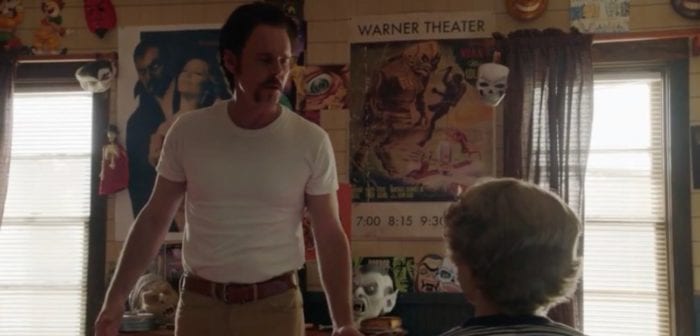
What makes the acting so enthralling, what sets the overall theme aflame in such a satisfying way, is the rudimentary story beneath it all. “Model Kid,” in a sense, borrows from the bookending side story from the series’ 1982 feature film namesake. Uncle Kevin and Joey can be swapped out for Tom Atkin’s Stan and Joe Hill’s Billy quite easily. In fact, I’d venture to guess that the name choice of “Joey” in this segment is anything but coincidence. Back when the original Creepshow was made, Joe Hill was merely little Joey Hillstrom King, son of…well, you know all that.
Much like in the original film, Uncle Kevin despises young Joey’s infatuation with horror. There’s a mean-spiritedness to him, similar to Kev’s predecessor, but it’s taken to a lower level. It is mentioned that Uncle Kevin boxed “in the army.” Given the timeframe the segment takes place in, it’s likely Kevin saw combat in Vietnam. This is speculation, of course. There’s no solid indication of that besides the seemingly throw-away line about his service. It might be making something out of nothing, but there’s an interesting parallel to be made in that case to a character in “Public Television of the Dead,” which I’ll get into soon enough.
At the end of the day, this is a revenge story, plain and simple, much like Stan and Billy’s tale. After Joey orders a model set called “The Victim,” he sets about terrorizing the real monster in the household with his fictional creatures of fear. Midway through the episode, we’re treated to a fantasy Joey has of the local bully getting his neck snapped by a lumbering Frankenstein’s Monster type. I can say with conviction that there isn’t a horror fan in the world who hasn’t had such daydreams themselves. We all take what is immediately dangerous to us (whether that’s a bully or a family member, someone online, whatever) and turn our imaginations loose on that person or situation. It’s a way of therapy, I suppose. Stephen King himself has said as much.
And that sort of idea is what really gets played with here. The embracing of fictional monsters to combat the true monsters in our lives. That said, Joey encompasses the very fabric of why the majority of us love this genre in the first place. And for that, I will be forever grateful for this simple yet insightful segment.
Let’s talk about set/costume design, hmm? “Model Kid” is set in 1978 as per June Aurora’s headstone. Now, I may have been negative 10 years old at that point, but I’ve seen and studied plenty of late ’70s films, photos, etc. This has all the earmarks of the real deal—sans a Super 7 “The Worst” action figure slipped into the background on Joe’s dresser. Besides that, the tendency for anachronisms is nearly nil! That’s pretty impressive, given this series isn’t exactly a hardline period piece affair.
The appearance towards the end of the episode of Gillman and The Mummy is sure to stick with viewers long after, even after “Public Television of The Dead” wraps up! We’re given expertly crafted, practical creature designs. Yes, you read that right. One thing that, if I’m being honest, turned me off last season was the seeming overuse of CGI. I can tell you with immense joy that at least the season premiere appears to be 99% practical, 1% CGI (blood). What a damn fine thing, indeed. The grand entrances of both Gillman and The Mummy, complete with classic Creepshow backsplashes, are breathtaking, memorable, and certain to delight.
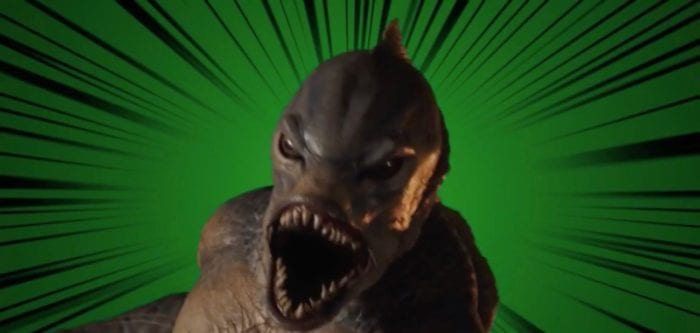
As a whole, “Model Kid” did everything for me that I was hoping for last season and, in truth, felt like I missed. Moment of honesty: I only watched two episodes of Creepshow Season 1, and neither of them thrilled me. I adore the work of Joe Hill, and as a fan, I couldn’t stand Tom Savini’s adaptation of “By The Silver Water of Lake Champlain.” I love Tom with all my heart, one of Pittsburgh’s finest, but holy hell was that a complete bastardization of Joe’s originally charming and warmhearted short story! “Model Kid,” however, restored my faith in the series and brought me back into the fold. The writing was top-notch, and Nicotero’s direction—as with the second segment—brought all the rawness and heart of Romero with it, and the acting lent itself perfectly to the subject matter. And what’s more, when you bring classic monsters into the mix and do it right as this segment did, I’m all over it.
“Public Television of the Dead”
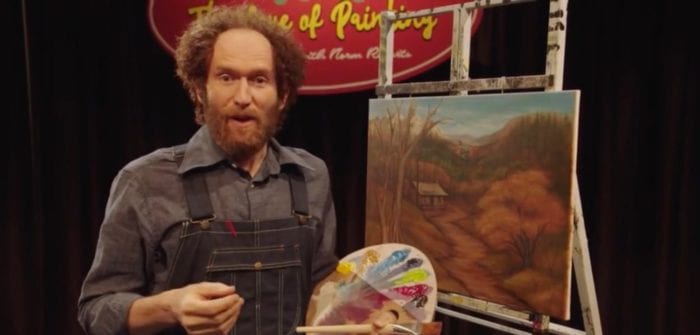
Okay, so this is the segment that I’m sure the entire expanse of horror Twitter and the internet at large is going to be all over by the time it releases. I suppose there’s no reason to tease out what this segment has in store for viewers, and I’m sure you’ll have heard about it by the time you’re reading this.
But first—yeah, I know I said I wouldn’t tease it out, hush—I want to say something. I’m sure there are going to plenty of people as blindsided as me by the surprise this segment has in store for us all. Here was my original line of thought: Creepshow—Romero—Pittsburgh TV Station—Mister Rogers?—No, Dawn of The Dead—okay, so Living Dead something?
Wrong. I was so wrong. Maybe you will be too.

“Public Television of the Dead” takes the viewer on a surprise excursion into the land of The Evil Dead, complete with a performance by none other than Ted Raimi himself! I know, right? Absolutely insane!
The set up: a cable access station, host to a Mister Roger’s-esque children’s show, a Bob Ross-alike, and a laughably accurate take on Antiques Roadshow run wild with the legions of the damned after the Necronomicon Ex-Mortis is brought in for televised appraisal. INCREDIBLE.
Penned by Monster House and Sarah Silverman Program screenwriter Rob Schrab, “Public Television of the Dead” absolutely brings it, and then some. There’s humor, there are nods to Evil Dead, there’s incredibly meta detail to the PBS-style hosts…this segment had me rolling. I mean, just the thought of someone named “Ted Raimi” (no dancing around, that’s Ted character’s name) bringing in the Necronomicon—“been in the family for years”—to “The Appraiser’s Road Trip” and it unleashing unholy hell is pure, solid gold on its own. Add in the big-hearted Norm Roberts (Bob Ross’s doppelgänger), demented Mrs. Bookberry, and the well-meaning production crew, and you’ve got yourself a piece of modern television for the age.
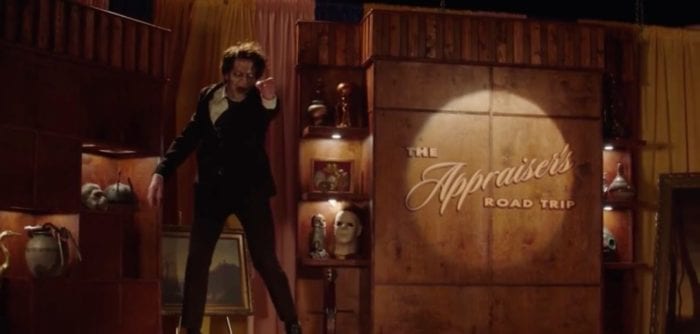
As much as “Model Kid” stole my heart and ran away with it, I have to admit, “Public Television” is the segment this episode will be remembered for. From here on out, it will be amongst the Evil Dead fandom’s must-see list and will be written about, included in lists, and so on. Suddenly, there is now something else under that franchise’s umbrella, and this is one hell of a something-else!
As mentioned earlier, there is a probably-unintentional correlation between two diametrically opposed characters in each respective segment. In “Model Kid,” we have Uncle Kevin—an abusive, hurtful drunk who just so happens to be a (probably Vietnam) veteran. Norm Roberts in “Public Television” is definitely a veteran of Vietnam, as it is clearly spelled out his role in the Tet Offensive. George (Todd Allen Durkin) mentions to Claudia (Marissa Hampton) that he couldn’t imagine what horrors Norm had seen “over there” and the things he must have had to do to survive. While Norm’s experience in combat comes in handy later when sh*t hits the proverbial fan throughout the production studio, I think it’s important to draw attention to the dichotomy between Uncle Kevin and Norm.
Norm Roberts took all of the pain and anguish of war and fought to channel it into his calming art. An effort to spread some goodness in the world through his television program. Whether you know it or not, this too is based on the real-life of Master Sergeant Bob Ross. Yes, Mr. Happy Trees once made people scrub latrines, get down and give him twenty, and so on. Uncle Kevin, on the other hand, allows his every action in civilian life to be dictated by the ferociousness the military instilled in him. Looking at the episode as a whole, both segments, these two characters can represent the choices we all make in our lives. The type of people we decide to be, even if we’ve come from the same terrible or horrifying situations. You can let your world influence you or you can influence your world. No better example of that than the differences between Norm Roberts and Uncle Kevin.
From a technical standpoint, the segment serves up more than just surprises. Nicotero, at several points, mimics camera moves and angles from Sam Raimi’s original classic films. There’s the pinch zooms, the shaky fast-floating camera angle (spirit cam, I like to think of it). All of this and more. Once the reveal of the Necronomicon hits, the entire mood shifts through the camera lens and takes on the very spirit of Evil Dead in such a respectful and tasteful way, it has to be seen to be believed!
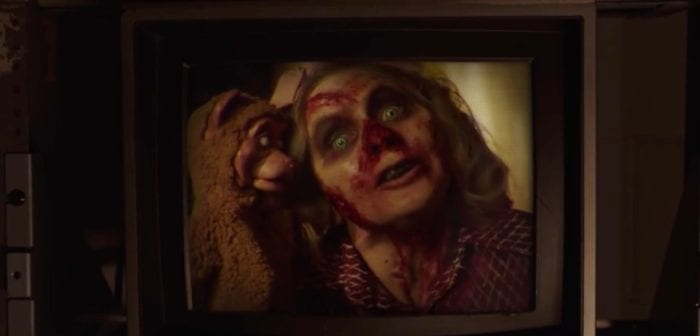
One more point to mention regarding Evil Dead tie-ins: there are a number of references the most eagle-eyed of viewers will catch. Early on, a painting Norm Roberts makes is an Evil Dead landscape portrait, complete with the cabin and blown out bridge. And, also, on the set of “Appraiser’s Road Trip,” the infamous Freddy glove can briefly be spotted amongst the decorative pieces. There is a Michael Myers mask, as well! Little nods and references like those mean so much, honoring the lore and fandom in a way that doesn’t feel like cheap fan service. There are plenty of intellectual properties out there that do that, toil for the appeasement. This episode of Creepshow, at least, just lets it all be real and natural, not forced and tacky.
As with “Model Kid,” the makeup and effects department shines through in this segment. Careful attention is given, not only to the Evil Dead-style transformations (which are spot-on) but also to the human hero characters as well. If you were to see a still shot of Norm Roberts (Mark Ashworth) out of context, you’d swear you were looking at a Bob Ross biopic in the making. There’s not a specified year in which “Public Television of the Dead” takes place, but I surmise the segment is set circa 1981–1983, based solely on certain pieces of wardrobe, hair design, and furniture. There are numerous stunts in this segment, including a flying Ted Raimi, that I had myself a damn ball watching. Decapitated heads, glowing storybooks, projectile Civil War-era silver dollars? Who can ask for more?
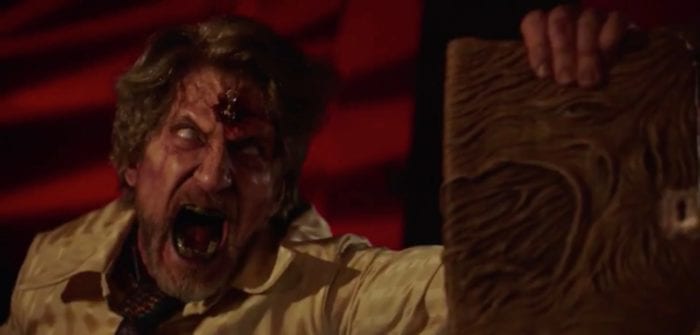
All in all, this season premiere took me, shook me, filled me with joy, and sent me packing into the night to await whatever the next week will bring us. I can say with confidence that this episode feels very natural when compared to the show’s title source. From the use of red/blue lighting in both segments to the subject matter, not a thing felt out of place. This reviewer here is fully satisfied. Let’s see what the rest of the season brings!


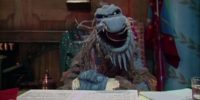
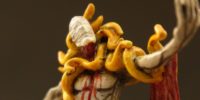
Truly appreciate this masterpiece and all the heart and guts put into ..big enjoyment and scare factor .